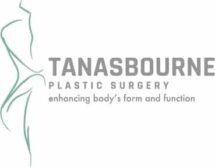Liposuction is a minimally invasive cosmetic procedure that uses a thin, hollow tube called a cannula to remove localized areas of body fat. The cannula is inserted through extremely small incisions, and then moved back and forth to loosen excess fat, which is suctioned out using a vacuum or a cannula-attached syringe. Treated areas look slimmer and more contoured, and in better overall proportion to the rest of the body. However, liposuction is not a method for losing weight, and is not effective in eliminating cellulite, or tightening loose and sagging skin.
The ideal candidate for liposuction is in good overall health, but has one or more areas of fat that do not respond to diet or exercise. Areas that are often treated with liposuction include the thighs, abdomen, arms, back, hips, buttocks, chest, face, calves and ankles. Liposuction can be performed alone, or in conjunction with other cosmetic procedures, such as thighplasty and abdominoplasty.
The Procedure
One of the most common liposuction techniques is tumescent liposuction, which may get an assist from ultrasound or laser. It is performed on an outpatient basis.
During tumescent liposuction, a solution comprising saline solution, lidocaine (an anesthetic) and epinephrine (a blood-vessel contractor) is injected into the area being treated. The solution causes the targeted tissue swell and become firm, which makes it easier to remove via the cannula. The advantages to this technique are that the anesthetic is built in, so there is no need for general or IV sedation, and blood loss is minimized because the epinephrine constricts blood vessels.
In laser-assisted tumescent liposuction, a laser is used to liquefy the fat, which makes removing it easier. The laser can also be used to tighten treatment-area skin after fat is removed. Similarly, ultrasound-assisted liposuction uses ultrasound energy to liquefy fat.
Recovery & Results
After liposuction, patients experience mild swelling, bruising and discomfort in the treated area. Compression garments or elastic bandages are typically worn to help reduce these symptoms as the area heals. Patients can return to work and other regular activities as soon as they feel comfortable, which is usually after a few days. Exercise and other strenuous activities should be avoided for a few weeks.
Results of the liposuction procedure may not be apparent until swelling and bruising subside, which usually takes a week; swelling should completely subside within a few months. Incisions are rarely sutured, and scarring is almost nonexistent, because the incisions used for the cannula are so small. The results of liposuction are long-lasting, unless a substantial amount of weight is gained.
Fat Transfer
Fat transfer, also known as autologous fat transfer or liposculpture, is a surgical procedure that involves restoring lost volume in the face with the patient's own fat, taken from the abdomen, thighs or other areas. This procedure is effective in treating sunken cheeks, facial lines, acne scars and other areas of lost volume that have developed as a result of aging, sun damage and other conditions.
Unlike fillers and other volume-enhancing treatments, fat grafts are taken from the patient's own body, and as a result cannot cause an allergic reaction. The fat is naturally accepted by the body. Autologous fat grafts also last longer than synthetic materials.
The Procedure
During the fat transfer procedure, fat is harvested from the donor area by inserting a cannula and suctioning out the fat, similar to liposuction. This is done under local anesthesia to minimize any potential discomfort. The harvested fat is then purified so that only the fat cells are grafted. Once the fat is ready to be placed, it is injected into the targeted area through a cannula until the desired appearance is achieved.
This procedure is performed on an outpatient basis in your doctor's office or a surgical facility. Because of the different aspects involved, treatment time can vary significantly depending on each patient's individual procedure.
Results & Recovery
Patients may experience mild swelling and bruising after the fat grafting procedure, which can be minimized by icing the area. Fat transfers usually last longer than fillers and other volumizing treatments, and are considered safe for most patients since no foreign material is being injected into the body.
For more information about our facial procedures, or to schedule an appointment, please complete our online form or call 503.297.9340
